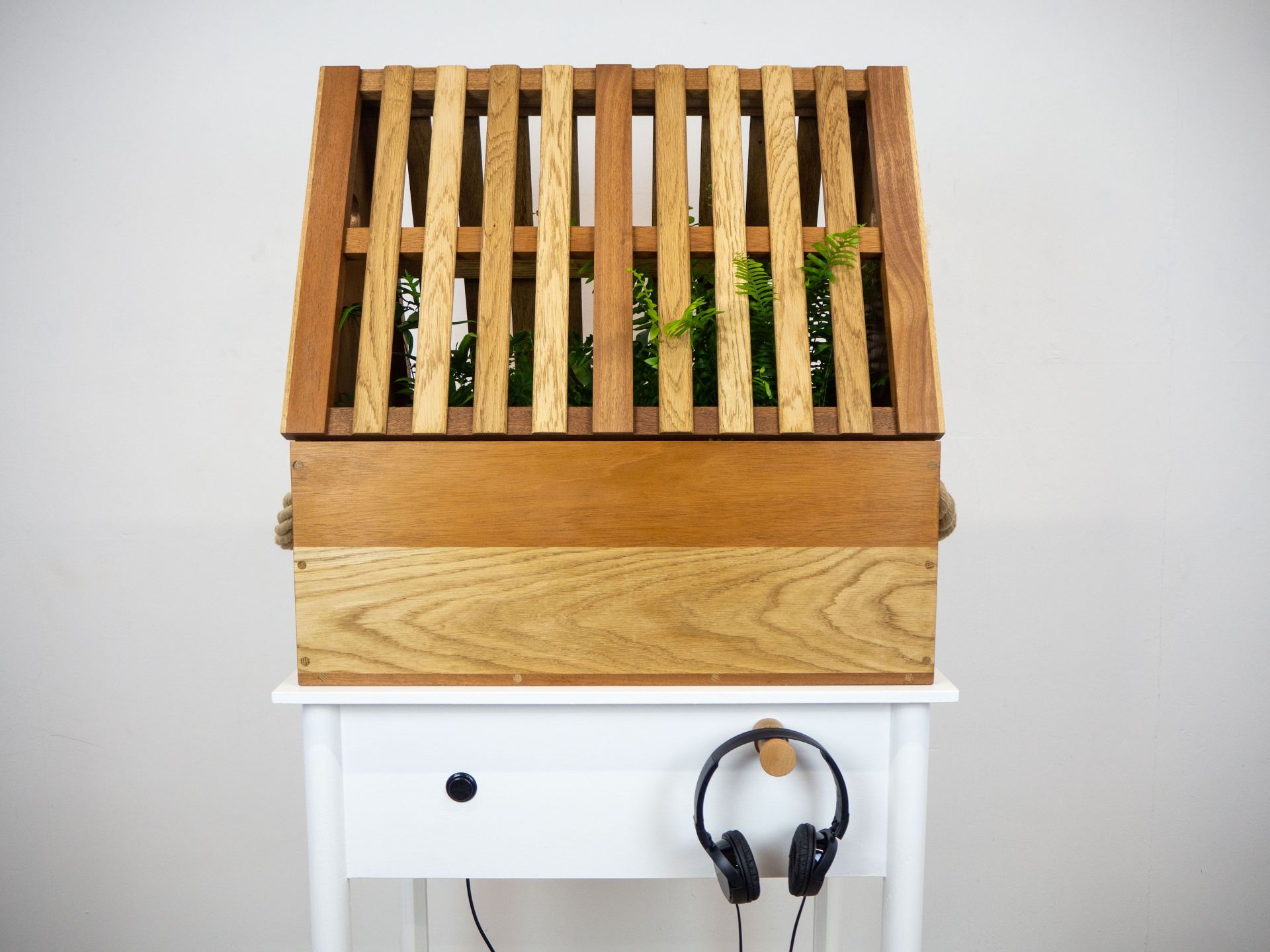Injurious Effect, a public artwork by Bristol-based artist Ellie Shipman has been unveiled. The work was commissioned by the University of Bristol’s Bristol Digital Futures Institute for permanent display in the new innovation hub housed in the Victorian Gas Works on Avon Street. The sculpture was fabricated by Jack Stiling of Stiling’s Workshop.
Listen to the sound piece via this link.
The artwork explores the relationship between innovation and societal change prompted by the history of the gas works. Fear of the new, of change and hidden or unseen implications have always gone hand in hand with socio-technical innovation. The artwork invites reflection on the past, present and future of innovation in Bristol through the symbol of a Wardian Case, a terrarium-like wooden crate used for transporting plants in protected environments across the British Empire during the 1800s. The Wardian Case represents innovation and all the wondrous possibilities and harmful impacts it can bring. It inspired the artwork through the history of the gas works researched by Dr James Watts who writes:
“It was recommended by some horticultural experts to give plants the protection of a Wardian case (used for transporting plants from across the globe) if there was a gaslight in the room. Gas was associated with air pollution which posed a constant threat to horticultural activities. “The fumes, or products of combustion, of coal-gas have a more injurious effect upon plant-life than anything else,” wrote B. C. Ravenscroft in his handbook Town Gardening (1883).”21”
Avon Street Gasworks and Bristol’s Gas Industry
A Bristolian history of innovation with lessons for our digital future
Local memories, artefacts and photographs as well as a BDFI report, ‘Avon Street Gasworks and Bristol Gas Industry’ informed the work.
The audio piece reflects on the impact of gas across Bristol and beyond: from local memories of children being sent to collect ‘coke’ (coal) in prams and homemade Go-Karts for their families’ fires; to the historic industrial development of the Feeder Canal, Barton Hill and East Bristol; the Gas Workers Strikes of 1889 and the domestic and societal implications of gas as an innovation.
Bristol Digital Futures Institute commissioned the installation for their newly renovated home to illustrate the history of innovation on the site from the last 200 years. The work asks the question, how can innovation protect what already exists, be used for good and mitigate harm?
More information about this public art commission on the BFDI website here

